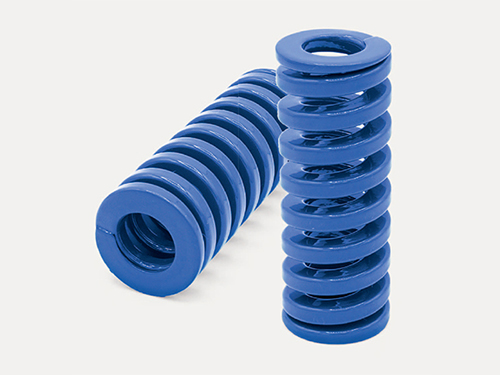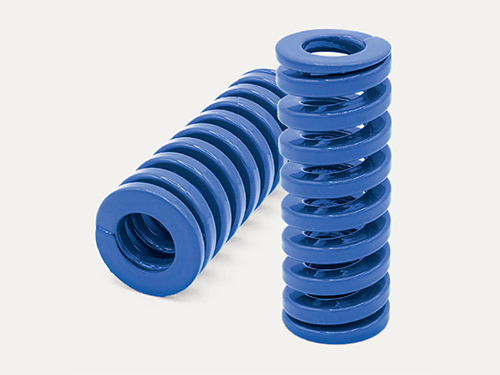
The heat treatment of spring is to change the internal structure of metal and alloy by heating, holding and cooling of spring, so as to achieve the purpose of changing the mechanical, physical and chemical properties of material. The common heat treatment methods are as follows.
1. Quenching: Quenching means heating spring steel to a certain temperature (critical temperature) (AC3 or AC1), holding it for a certain time, making it into austenite, and then cooling it rapidly at a temperature greater than the critical temperature, thus obtaining the heat treatment method of martensite structure. How to determine the spring quenching temperature? Spring quenching temperature is generally determined according to the following points: (1) the steel ingredient: AC3 + 30 ~ 50 ° C is suitable for the carbon content less than 0.8% of the spring steel wire, AC1 + 30 ~ 50 ° C is suitable for the carbon content is equal to or greater than 0.8% of the spring steel (2) the appearance of spring size and shape, such as wire diameter < 3 mm (3) shall not apply to the lower heating temperature cooling medium and quenching method (4) the austenitic grain growth tendency: 50 crva, such as heating temperature is available in a wide range of choices; If 65Mn60Si2Mn, the temperature should not be raised too high to avoid overheating. (5) Heating speed: For example, the quenching temperature of lead-quenched carbon spring steel wire and oil-quenched steel wire can reach 900~950°C, but the grain is not coarse

2. Tempering: Tempering is a heat treatment method in which the quenched spring is reheated to a temperature below AC1, held for a period of time, and then cooled to room temperature in an appropriate way. Generally, tempering is divided into low temperature tempering (150~250°C), medium temperature tempering (350~500°C) and high temperature tempering (500~650°C) for what purposes? (1) To reduce the spring hardening or internal stress (2) to stabilize the spring structure and geometry (3) to obtain the required mechanical properties